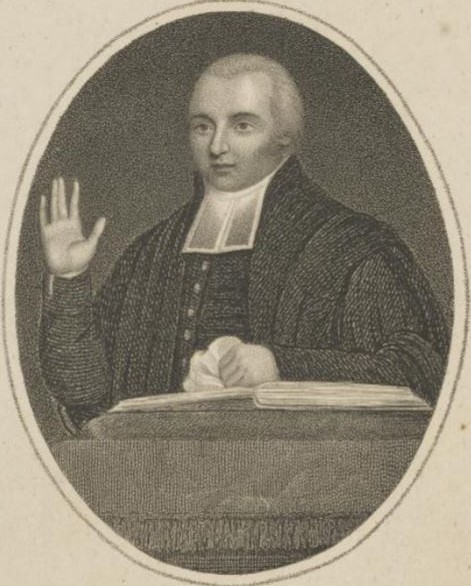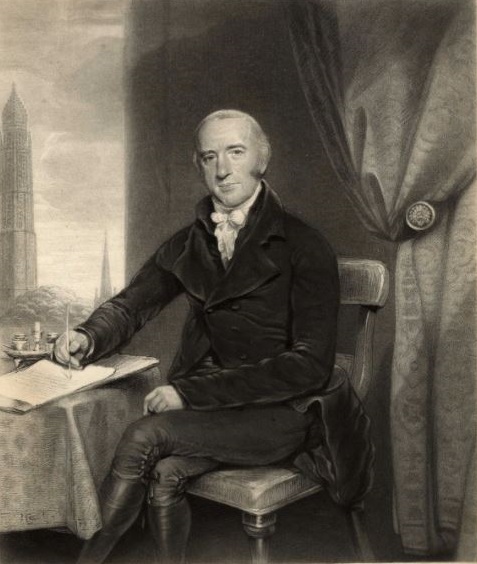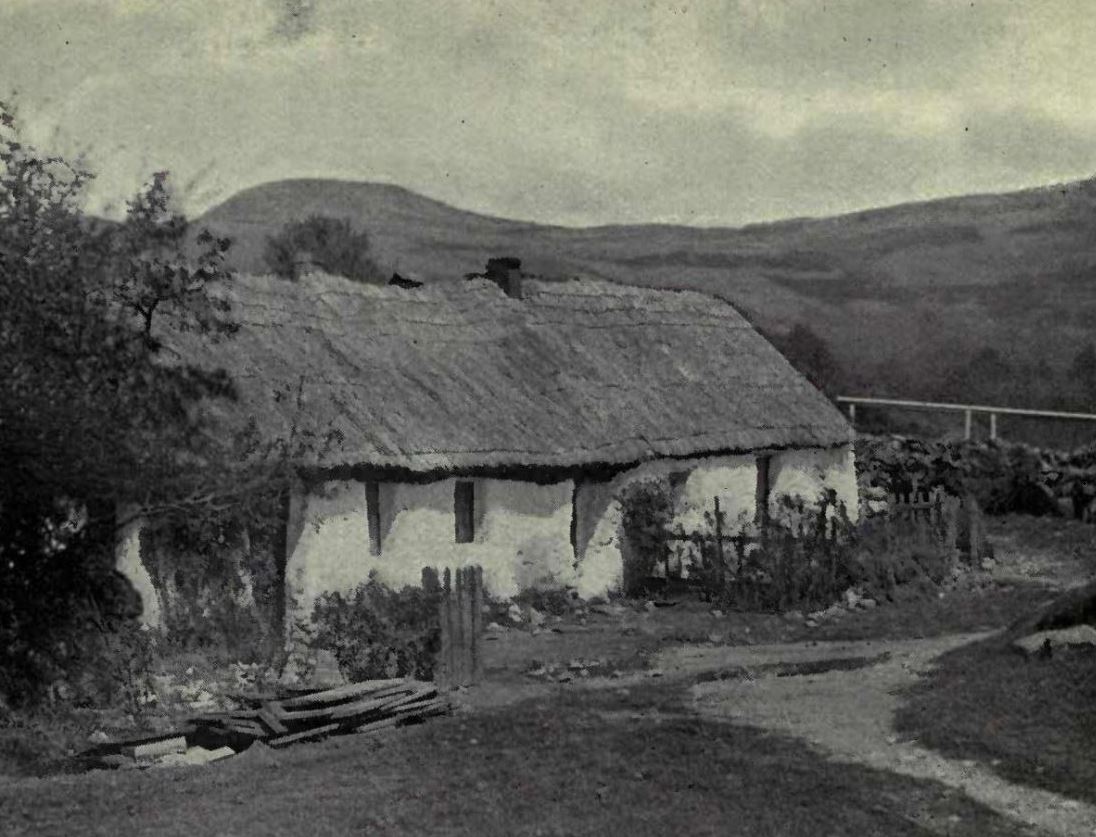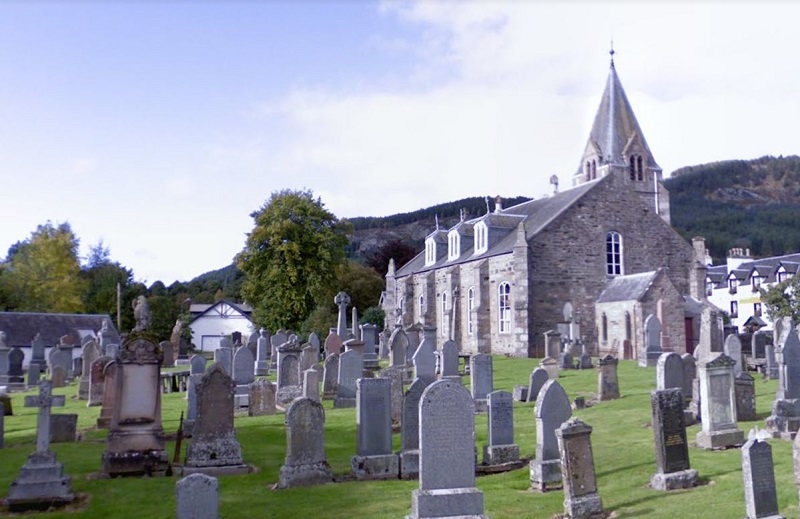

This Revival Story Begins with an Unconverted Minister
In the year 1786, at the age of 22, Alexander Stewart (1742-1821) became the minister at the Moulin Presbyterian Church of Scotland. He didn’t enjoy his job and it was openly known that he was not converted—he had never made a profession of his faith in Jesus Christ as his Lord and Savior. That was a travesty at that time, and still is today, with the many denominations filling pulpits with those who deny the deity of Christ, the virgin birth, the vicarious death of Jesus on the cross, as well as his bodily resurrection (progressive theology).
Through Stewart’s own confession in later years, he said that
► He was pleased when his catechism classes were poorly attended, as it gave him more time for what he really enjoyed doing, which was playing cards and reading novels.
► His prayers and sermons were cold and formal, and they weren’t listened to by the congregational members.
► He didn’t preach about life transformation, nor the need of a conversion experience.
► The congregation, having itching ears, were content that he didn’t preach sermons that pointed out their sins.
► There wasn’t a single person in the congregation that was living an exemplary life.
The Condition of the People
With an unconverted minister, you can expect that the people would have no solid biblical understanding and that their lives would be filled with all sorts of vices and superstitions. That was the case with the Moulin Presbyterian congregation.
Even though the people had the Scriptures in their own language, Gaelic,
► Superstitiously, the people attended church on Sundays and took communion, but these activities were the only outward evidence of godly living they displayed.
► The people had only a fundamental understanding of the Bible.
► There was little reading of the Bible in the homes.
► There was hardly any family worship time in the homes.
► The children were not systematically being taught.
► The people were trusting in their works for salvation.
Two Converts
Remarkably, two individuals began to experience conviction of sin and came to Stewart for spiritual counsel. They assumed this minister could help them in their pursuit of Christ, but they were mistaken, as Stewart had never met Christ himself, and he could only convey theory. Through God’s mercy those two received from God what they needed without their pastor’s assistance. Stewart even wrote that “The good Physician” cared for them without his input.
God’s Grace and Mercy Granted to the Pastor
With Jesus preparing to gather a harvest in Moulin and the surrounding region, He could have taken Stewart out of the way. Stewart even acknowledged that he was a “useless encumbrance,” or an “intervening obstacle.” But God was merciful, granting Stewart saving faith, and then even used this “new Christian,” to be His instrument to lead the revival.

Rev. David Black (1762 – 1806)
The Salvation of Rev. Alexander Stewart
Rev. David Black, minister of the Lady Yester’s Church, in Edinburgh, was a patient friend of Stewart, and it was through him that Stewart began taking steps toward Christ.
Black introduced Stewart to Rev. Charles Simeon of Cambridge, a town which under Simeon’s ministry became a “centre of evangelicalism.”
In addition, Christian friends gave Stewart books that revealed to him the truth of the gospel. One of the authors was John Newton. Stewart was also deeply impressed by biographies he read in the Evangelical Magazine. And then there were the sermons, prayers, and conversations with Rev. Charles Simeon of King’s College, Cambridge.
In June of 1796, Stewart had Rev. Charles Simeon as a guest in his home for two days, with Simeon preaching at the Moulin church. Nearly 1,000 attended the Moulin church during Simeon’s visit, and it was following this preaching that Stewart became a genuine follower of Jesus Christ. Stewart stated in a letter to Simeon, dated Nov. 25, 1796:
I had read and heard about the natural state of man, and about the grace of the Gospel; but never till then [during Simeon’s visit to Stewart’s home] felt its power.

Rev. Charles Simeon (1759 – 1836), of King’s College, Cambridge
 Extraordinary Prayer
Extraordinary Prayer
Through Stewart’s renewed sermon content, the first two converts previously mentioned now had a much clearer view of the Gospel. These two individuals, along with Stewart and his family, began to meet for weekly prayer “in a mean and smoky hovel,” which was the home of a very godly, yet poor home-bound woman.
Gradually others heard of this prayer gathering and joined with them. It was this prayer gathering that laid the foundation to Stewart’s inspired and anointed preaching that followed.
After this woman passed away in 1799, the weekly prayer gathering was moved to the parsonage (manse).

What the “mean and smoky hovel” might have looked like.
Power-Filled Sermons
From 1786 till 1796, Stewart, being unconverted, had preached dry and empty sermons, void of the power of God. But with Stewart’s recent conversion, things began to change. There was a renewed excitement and attention granted to him during his sermons, as he adopted Simeon’s method of preaching from an outline instead of reading from a written-out sermon, thus allowing for extemporaneous content. This change led people to begin thinking deeply about his sermons and to discuss them frequently and openly.
Stewart’s Emphasis in Sermons Following His Conversion
► August 1797- January 1798 he preached on the fundamentals of Christian doctrine.
► Summer of 1798, he preached on the Lord’s Supper and baptism, which helped to dispel superstitions the people held about these topics.
► March – July 1799 he preached a series of sermons on regeneration—the need for a born-again experience.
It was following these sermons that the congregation began to see weekly conversions. Stewart wrote to Rev. David Black concerning what was being experienced:
Oh, my dear brother, had you but been here with us for a week past, how your heart would have rejoiced! Such hungering and thirsting after communion with God! Such genuine humility and contrition for sin! Such devotedness to the Savior! Old converts quickened and new ones added to the Lord!
After Rev. David Black visited Moulin in the summer of 1800, he wrote:
Such a revival I never witnessed before—it is truly the doing of the Lord, and marvellous in our eyes.
Conversions Multiplied and Discipleship Conducted
Rarely did a week pass when there weren’t at least three people born again. The number of people that had already been converted made it easy for new believers to find others with whom they could talk and get spiritual counsel.
Following church services, several small groups would often form in the open fields, around the more mature believers, where conversations about the sermon and other spiritual topics were discussed.
From the very small village of Moulin there were 70 that were born again, the majority being under 30 years old. There were also an unknown number of children who placed their faith in Christ. The majority of those converted through the revival undoubtedly took place outside of Moulin, as the revival spread to other parts of Perthshire.
How Evangelism Was Conducted
The revival’s evangelistic power spread across the region through public and private conversations. These conversations produced conviction of sin, and ultimately led to conversions.
The more mature believers of the congregation were the tools the Lord used to turn many of the young people toward Christ.
Opponents of the Revival
Every revival will have opposition, and this revival was no different. The opponents of the Moulin Revival were those of the educated class. They spoke against the poor and illiterate believers and said that they were only pretending to have had an experiential knowledge of God. The educated class were offended that the poor (and mostly illiterate) people were having experiences with God that they hadn’t, and they took great offence at that.
The educated class were also offended when Stewart preached that there were only two classes of people: the children of God and the children of the devil (1 Jn. 3:10). This grouping linked the educated class to the poor and illiterate, an idea that was highly offensive to them.
Results of the Revival
► The revival’s power spread to neighboring congregations throughout Perthshire.
► There were those that were so hungry for the Word of God that they would walk seven miles to attend church services. Those same individuals would then be back the next Sunday, having brought a friend or relative with them.
► There was no noticeable backsliding.
► There was a noticeable change in the community, even in the lives of those who had not yet been converted.
► Many people became so impacted by the reviving power of God, that they became defenders of the Gospel, even though they had not as yet made a commitment to Christ.
► The mockers became so few that the persecution stopped.
► There was a very noticeable change in the behavior and conversations of young people.
► There was a tremendous love for God and others.
► The older believers were no longer selfish and worldly-minded.
► Gossip and time-wasting activities were stopped.
► Swearing and foolish and indecent jokes stopped.
► The previous party-like atmosphere after a person’s death, during the wake, stopped. People still conducted wakes, but there was no longer the excessive drinking associated with them as had been common. Now these occasions were spent jointly reading the Bible or other spiritual books.

Moulin Church today – not original building (no longer in use).
The Revival Fades
Alexander Stewart became a much sought-after speaker, and in September 1805, he was transferred to a congregation in Dingwall. The new pastor that came to Moulin espoused liberal theology, denying the authority of the Bible, the deity of Jesus Christ, etc., and the revival’s power came to an end.
A minister who visited Moulin in 1811 found that believers in the area would walk close to 100 miles, from Moulin to Dingwall, to listen to sermons of their former pastor—Alexander Stewart.
Sources
► Alexander Stewart of Cromarty by Roy Middleton
► Charles Simeon by Christian History
► Evangelical Revival in Scotland by Wikipedia
► Land of Many Revivals by Tom Lennie
► Memoirs of the Late Rev. Alexander Stewart by Alexander Stewart
► Memoirs of the Life of the Rev. Charles Simeon edited by William Carus
► Moulin Church by Historic Environment Scotland
► Moulin, Scotland by Wikipedia
► Narratives of Revivals of Religion in Scotland, Ireland, and Wales by Anonymous
► Rev. David Black by National Galleries Scotland
► Original Portraits and Caricature Etchings by John Kay
Return to List of Revival Stories
Chet & Phyllis Swearingen:
Office: (260) 920-8248
romans1015@outlook.com
Beautiful Feet
P.O. Box 915
Auburn, IN 46706

